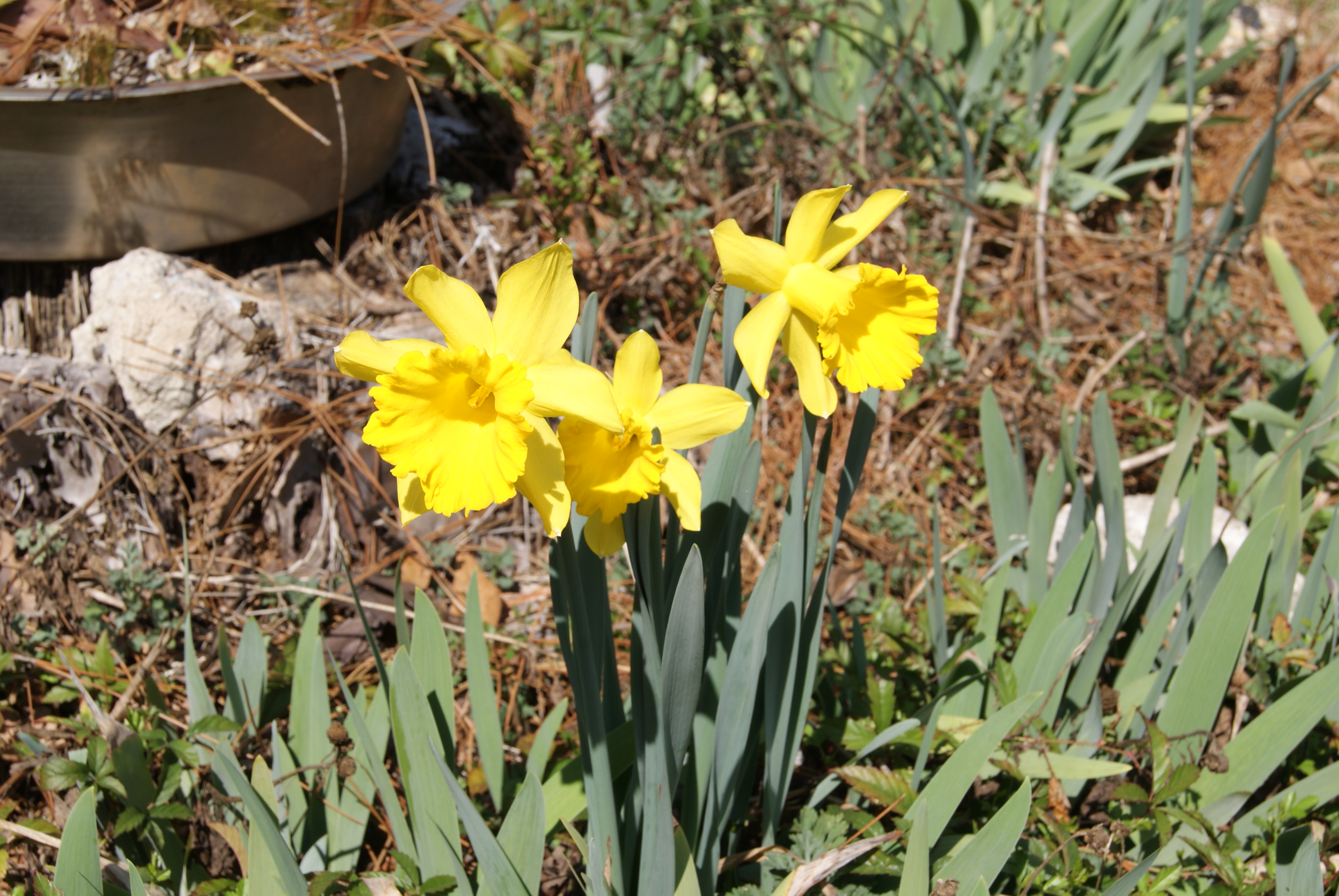
by Sheila Dunning | Mar 4, 2014
Few plants seem to signify the freshness of spring quite as well as daffodils. The name “daffodils” is derived from “addodell” a variant of Asphodel (a plant of the Asphodelus genus.) In historical documents and the common language of 16th century Europe, the term “daffodil” referred specifically to the wild daffodil, Narcissus pseudonarcissus.
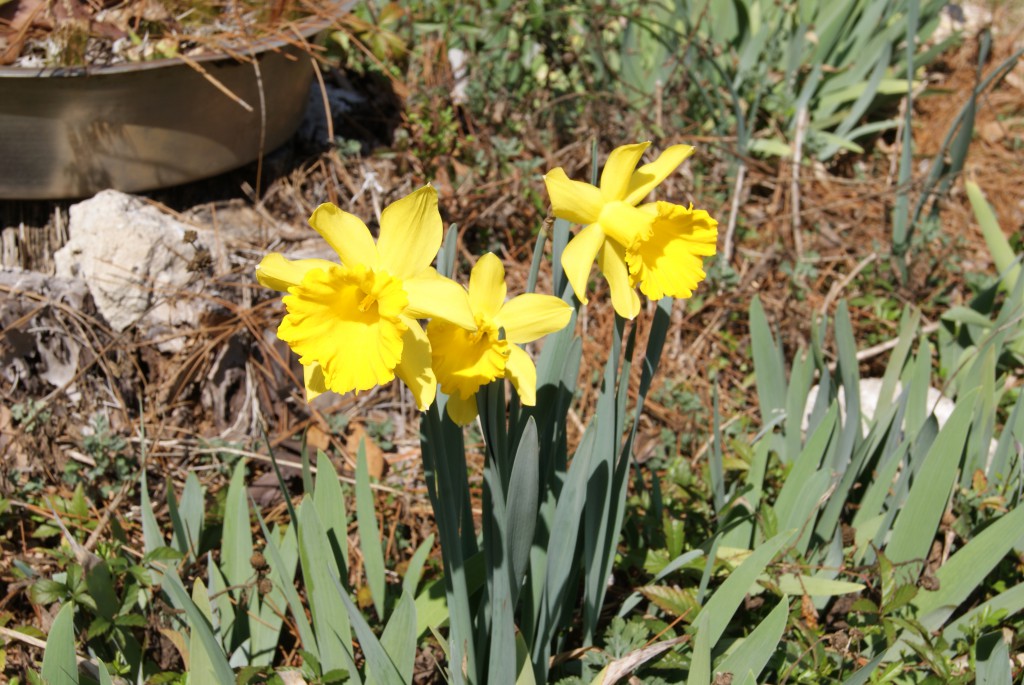
Daffodil in bloom. Image Credit Matthew Orwat
The derivation of the Latin narcissus is unknown. It is frequently linked to the Greek myth of Narcissus, who was rumored to be so obsessed with his own reflection that he died while gazing at himself in a pool of water. From the location of his death sprang the narcissus plant. Another Greek myth finds Persephone, daughter of the goddess Demeter, lured to her doom by the God Hades while picking a narcissus. Therefore the plant is perceived as a symbol of vanity in some Western culture.
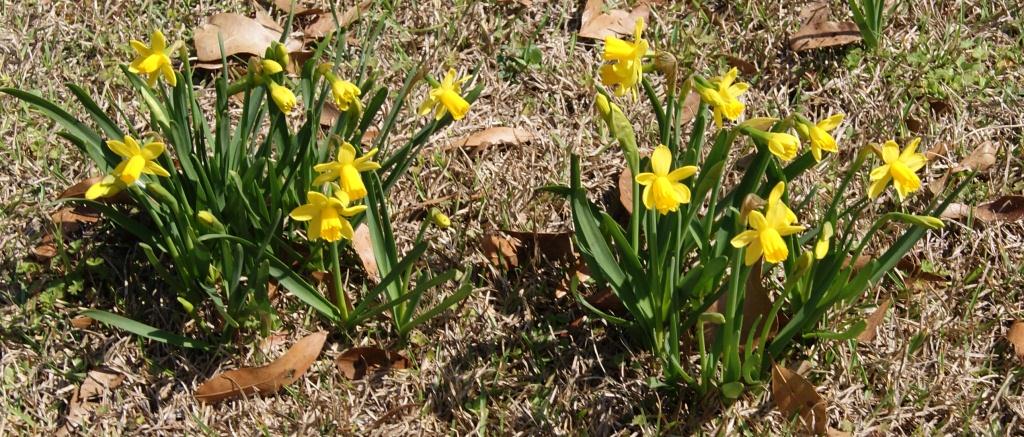
Daffidol cultivar ‘Tete-a-tete’ Image Credit Matthew Orwat
Others attribute the plants’ name to its narcotic properties. One translation of the Greek name is “I grow numb!” All narcissus species contain the alkaloid poison lycorine, mostly in the bulb but also in the leaves. Members of the Amaryllidaceae family contain unique types of alkaloids. They are responsible for the poisonous properties of a number of the species. Of the 200 different chemical compounds found in this plant family, at least 79 of them can be found in narcissus.
Daffodils are a popular potted plant for cut flowers, but also make attractive naturalized groundcovers in gardens and around trees, providing color from the end of winter through late spring. If the narcissus blooms on Chinese New Year, it is said to bring wealth and good fortune throughout the year. The flower color varies from white through pinks and yellows to deep reddish-orange with multiple petal forms. Hundreds of cultivars are available.
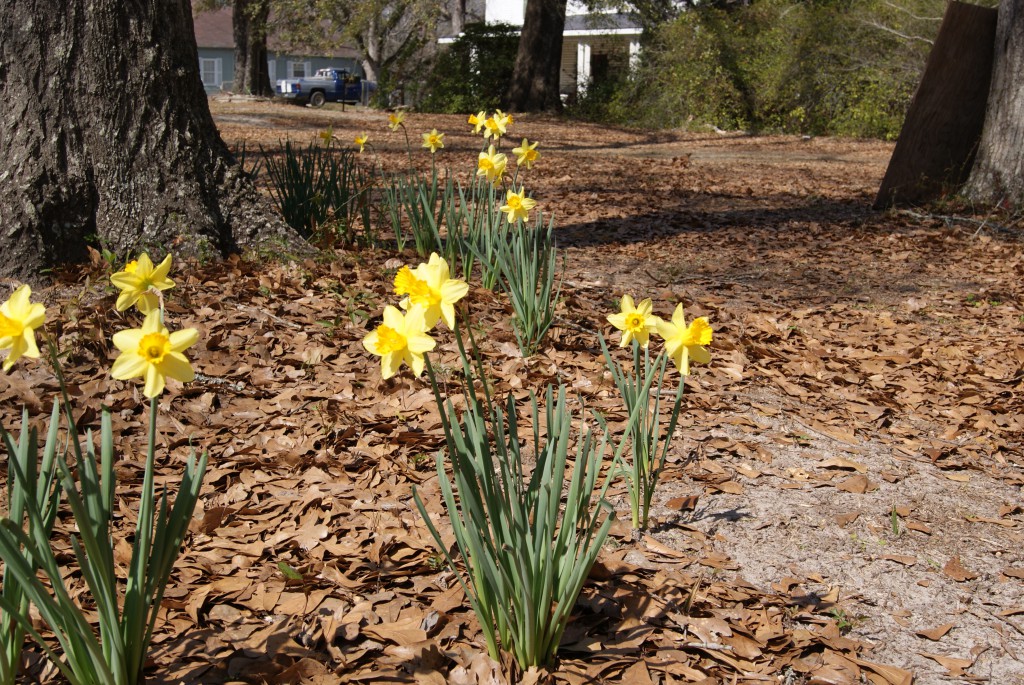
Daffodil bulbs under trees. Image credit Matthew Orwat
Planting dates vary according to geographical location, but bulbs are usually planted in the fall when the soil is cool. Daffodils grow well in full sun or light shade, with the blooms lasting longer when protected from the noon day sun. When selecting a location for planting, it should be noted that the individual flowers will face the sun.
Pre-chilled bulbs should be planted in 6-8” deep holes with a tablespoon of slow release fertilizer added to the soil directly under the bulb and with 4-5” of soil covering the bulb. Watering throughout the winter will be necessary if rains are infrequent. After flowering, the daffodils need to be fertilized and watering should continue. The foliage will naturally turn yellow and die as stored food is restored to the bulb.
Division, transplanting and collection for forcing potted plants can be done after all the foliage has declined. To force Daffodils to bloom at varied times in a container the dried bulbs will need to be stored at a 45° F temperature for 4-6 weeks prior to being placed in the sun to grow.
The bright, cheery Daffodil flowers are beginning to bloom now and will continue as Easter approaches, reminding us that spring really is coming.
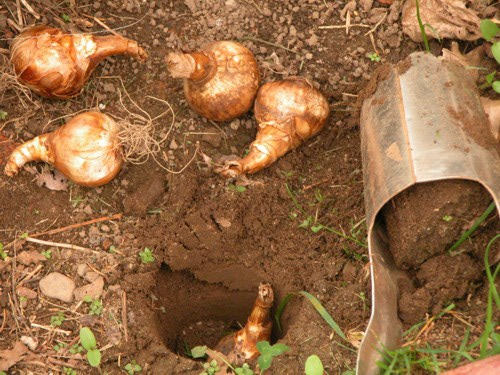
by | Oct 7, 2013
Gardeners may wonder why spring flowering bulbs are a timely topic now when fall is tip-toeing in, but as with most things in horticulture, there is a method to the madness. While many gardeners have become accustomed to running out to the local garden center and buying flats or pots of blooming bedding plants to create “instant gardens”, this last-minute approach simply does not and will not work when spring-flowering bulbs are desired in the landscape. So procrastinators beware! If beautiful beds of daffodils, tulips or Dutch irises are wanted next spring, now is the time to act, not next spring when everyone else’s are blooming.
Spring-flowering bulbs are generally defined as those that bloom here in north Florida between February and April. Information is available dividing these bulbs into categories based on when they bloom in the spring – such as very early, early, mid-season, late and very late. This will allow the garden to be in flower over a longer period during the season.
When buying bulbs, purchase the highest quality stock possible. The quality of the bulb correlates directly to the quality of the blooms. Selecting loose bulbs at a local garden center is like choosing produce at the supermarket. Pick the largest, plumpest bulbs that are firm with no obvious cuts, soft spots or rot. When ordering from a catalog, do it as soon as possible and generally choose the larger sizes when offered.
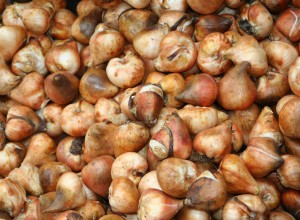
Be picky, look for high quality bulbs.
Choose selections wisely as the flowers of many bulbs do not last an especially long time. For example, while a tulip is a great bulb and an extremely attractive flower, it produces one flower that lasts about seven to ten days and then just like that, it’s done. Ranunculus, on the other hand, can bloom over a four- to six-week period. One thing to expect across the board, however, is the price for color from bulbs is going to be higher than for longer-flowering cool-season bedding plants like pansies and dianthus. If gardening budgets are limited, use spring bulbs more for embellishment and let cool season bedding plants provide the primary floral display.
Obtaining a nice display of spring flowering bulbs depends upon where and how they are planted. Good drainage, part to full sun and moderately fertile soil are all that are needed for bulbs to do well. The average landscape bed generally provides adequate drainage, but avoid low spots that tend to stay moist as this will cause bulbs to rot in a hurry. If drainage is in doubt, plant in raised beds. Choose a spot where there is some shade from the afternoon sun, this allows the flowers to last a little longer, especially if the spring weather turns warm.
It is important to plant bulbs at the proper depth. A rule of thumb is to plant bulbs at a depth equal to twice their height. This far south we generally don’t plant bulbs quite as deep as standard recommendations. Smaller bulbs are planted about 1 or 2 inches deep while larger bulbs are planted about 5 inches deep. Dig individual holes the proper depth, or excavate out, the area to be planted, to the recommended depth and plant all of the bulbs at once.
Once the bulbs are in the ground, plant over them with low growing cool season annuals, such as alyssum, violas, lobelia or pansies. Be careful not to disturb the bulbs. The annuals cover the bare soil and provide color before, during and after the bulbs bloom. Make sure the bulbs will produce blooms that are taller than the annuals, and make sure the colors of the annual flowers contrast with or compliment the flowers of the bulbs in a pleasant way.
Although the proper time to plant most bulbs is October and November, there are a couple of notable exceptions. Tulips and hyacinths will perform much better if they are refrigerated at least six weeks in the vegetable bin of your refrigerator prior to planting (storing longer than six weeks is better) starting now. Store them in paper or net bags (well labeled.) The paper or net allows excellent air circulation that in turn will decrease rot. Avoid storing them near apples and other fruit as these fruit produce a plant hormone called ethylene that can severely alter everything from the time a bulb will bloom to shape, to survival. Plant them in late December or early January when the soil has had a chance to get cold.
Many of the spring bulbs available locally or in catalogs will only bloom reliably for us their first year. Some of the favorites include: tulip, grape hyacinth, crocus, hyacinth, ranunculus, anemone, scilla, freesia, ixia, sparaxis and ornithogalum.
The following are some of the spring bulbs that tend to be reliably long-lived in north Florida and should bloom for several years at least: Narcissus cultivars such as paperwhites, Chinese Sacred Lily, Soleil d’Or, Grand Primo, Cheerfulness, jonquils, Sweetness, Trevethian, Peeping Tom, February Gold, Thalia, Ice Wings, Petrel and larger flowered daffodil cultivars such as Ice Follies, Unsurpassable, Carlton and Fortune.
Other reliable re-blooming bulbs include snowflake (Leucojum aestivum), some flowering onions (Allium neapolitanum, Allium drummondii), ground orchid (Bletilla striata), amaryllis (Hippeastrum species and hybrids), Spanish bluebells (Hyacinthoides hispanica), spring star flower (Ipheion uniflorum), Dutch iris (Iris x hollandica) and Easter lily (Lilium longiflorum).
You can also find an excellent publication written by Dr. Gary Knox on low maintenance bulbs at UF IFAS Extension’s EDIS website.
by Beth Bolles | Aug 5, 2013
Thinking of bulbs for the garden? Summer is not necessarily the time of year that gardeners think about beautiful blooms from bulbs and bulb-like plants, but there are many that bloom in the summer garden.
In general, many types of plants with an underground storage organ are classified as a bulb. These include plants with tubers, rhizomes, or corms. True bulbs including Lycoris and Crinum lily are compressed stems with a growing point surrounded by thick, fleshy scales. Corms such as Crocosmia are solid masses of stem tissue with a terminal bud and side nodes. The rhizome is an underground stem that grows laterally, with representatives of this type being blackberry lily and ginger.
It is likely that your garden is full of bulb-like plants and you were just not aware of their underground beginnings. If you want to consider a few more for the summer garden, here are some good choices.
Blackberry lily is a member of the Iris family that offers good summer bloom in our northern Florida gardens. Plants form sprays of foliage about 2 feet in height with stalks of orange flowers with red spots. Plant in full sun or partial shade and supply with well drained, amended soil.
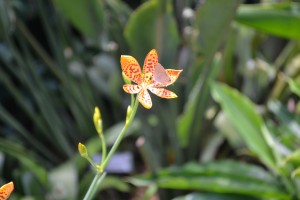
A hairstreak butterfly visits the Blackberry lily flower.
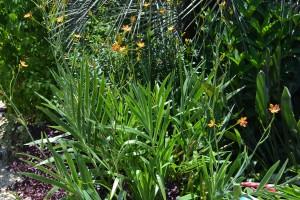
Another bright summertime bloomer is Croscomia. Commonly overlooked early in the year as foliage regrows from the cold, the bright orange flowers that emerge in summer make it a feature in garden beds. Plants grow well in both full sun and partial shade but clumps can expand easily beyond the desirable planting area. Thin out every few seasons to keep the clump manageable.
A tuberous perennial that will have stunning flowers closer to eye level is the Gloriosa or flame lily. Plant stems will wind around a trellis or garden feature, hold on with tendrils, and support large upward-curved petals. Flower colors are red, yellow, orange, or mixes of several colors. Flame lily prefers sunny locations and lots of moisture in the growing season. Winter soils should be drier to prevent tubers from rotting.
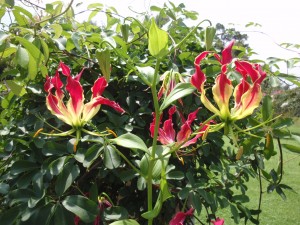
Flame lily growing with a spring blooming vine.
All of these options can enhance your garden and extend your bulb growing season beyond the spring. Happy Gardening!









